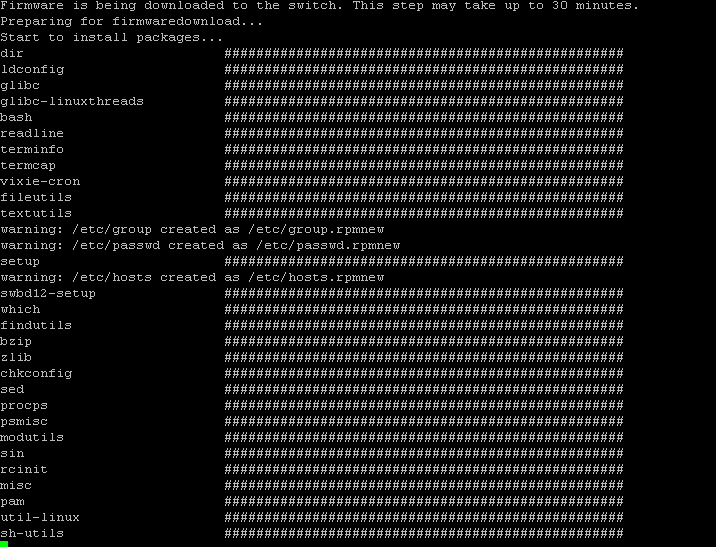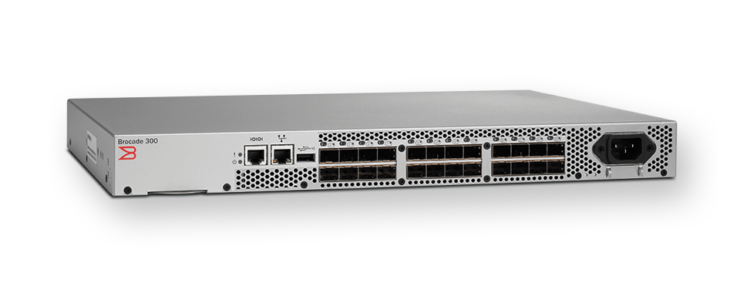This post discusses the process to update a Brocade Fibre Channel switch. You will require an FTP server to complete the process.
Pre-Upgrade Tasks
Before updating the Fabric OS on your Brocade switches complete the following steps:
1 Find the current firmware version and check compatibility. Check the current firmware version by entering at the CLI
firmwareshow
Verify the upgrade path from within the Brocade Fabric OS Upgrade Guide which you will find in the Brocade document library. As shown in the table below upgrade between one release is online more than this will require a reboot of the switch. So check you are happy with your multipathing setup on hosts before continuing.
If you have other switches connected to the switch you are upgrading check for computability in the Brocade Fabric OS Release Notes.

2 Backup the Brocade FC switches
3 Run a Brocade supportsave
4 You can also run an errclear to clear all existing stats
5 Check no ports are G ports
switchshow

6 Check that no firmware upgrade is already in progress
firmwaredownloadstatus
7 If the switches are in a fabric run the commands below and take a note of the setting. You will run these commands again after to ensure the fabric is healthy
nsshow nsallshow fabricshow
7 Download the switch firmware from Brocade
8 Extract the Zip file and place it on your FTP server
Upgrading the Brocade switch firmware
1 Connect to the switch with an admin account
2 Enter the command firmwaredownload and follow the prompts. If you are upgrading from 7.4.x or earlier you will need to use firmwaredownload -s. firmwaredownload -s just commits the updated firmware to one partition you manually need to commit it to the second. This can be a useful way of testing an update and reduces the risk of upgrade. This is the procedure that is covered in this post, once you are happy with the update you will commit to both partitions
firmwaredownload
3 Follow the prompts:
Enter the IP address of the FTP server
Host IP or Host Name: 10.10.10.5
Enter a username with access to the FTP server
User Name: anonymous
Enter the location of the firmware upgrade files. In the example below I have copied the upgrade files for v8.1.0 to the root directory of the FTP server
File Name: v8.1.0/v8.1.0c
Select the protocol the FTP server uses
Protocol (ftp | scp | sftp): ftp
Enter the password for the user account you selected
Password:
4 You will then see the switch update begin which will take aprox 30mins.
You can see all the steps that were taken taken below
FCSWITCH1:admin> firmwaredownload -s Server Name or IP Address: 10.10.10.5 User Name: anonymous File Name: v8.1.0/v8.1.0c Network Protocol(1-auto-select, 2-FTP, 3-SCP, 4-SFTP) [1]: 2 Password: Do Auto-Commit after Reboot [Y]: n Reboot system after download [N]: y Server IP: 10.10.10.5, Protocol IPv4 Checking system settings for firmwaredownload...</spanSystem settings check passed.>
Post Upgrade Checks
1 Once the upgrade is running you can check progress using:
firmwaredownloadstatus [1]: Tue Aug 15 21:46:28 2017 Firmware is being downloaded to the switch. This step may take up to 30 minutes. [2]: Tue Aug 15 21:52:21 2017 Firmware has been downloaded to the secondary partition of the switch.
2 When the process is finished you can check the switch firmware (Fabric OS) is at the expected version
firmwareshow
Appl Primary/Secondary Versions
------------------------------------------
FOS v8.1.0
v8.1.0
3 If your switch is in a fabric check the fabric is healthy with the following commands and check against the values you noted earlier
fabricshow nsshow nsallshow
If you ran the firmwaredownload without the -s command, that’s it your done. If not you can let things run for a bit and then you need to commit the firmware to the second partition
Committing the firmware
1 Enter the command below to confirm the primary partition is running the correct level of firmware
firmwareshow
2 Next commit the firmware
firmwarecommit
4 You can view the progress of the update
firmwaredownloadstatus
5 Finally now check that both partitions are running the correct firmware version
firmwareshow


